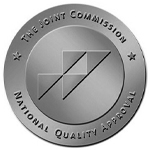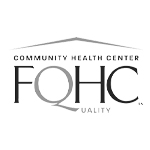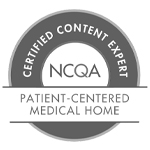Transcranial Magnetic Stimulation (TMS) Frequently Asked Questions
What is Transcranial Magnetic Stimulation?
Transcranial Magnetic Stimulation (TMS) is an important breakthrough in the treatment of a form of depression called Major Depressive Disorder (“MDD”). The U.S. Food & Drug Administration (FDA) has approved treatment with TMS for patients with MDD and OCD who have not responded to conventional antidepressant medication treatment. In addition to these indications, TMS is frequently used “off label” for other psychiatric and non-psychiatric conditions. Unlike Electroconvulsive Therapy (ECT), TMS is an office-based procedure that is administered under the supervision of the treating physician and requires no anesthesia or sedation. TMS has been shown to be safe and is noninvasive.
How does it work?
TMS uses magnetic fields to stimulate nerve cells in the brain using an electromagnet that is placed over your scalp. The magnetic field is the same type and strength as those used in magnetic resonance imaging (MRI) machines. The electromagnet painlessly delivers a brief electromagnetic pulse that stimulates nerve cells in specific areas of your brain to relieve depression or other symptoms for which it is being used.
How Effective is it?
Evidence of the clinical efficacy of TMS in treatment of depression includes more than 30 Sham-controlled clinical studies involving over 2000 patients. Aggregate data has been examined in more than 15 meta-analysis and qualitative reviews, providing consistent, comprehensive, and replicated literature base. In real world settings, 1 in 2 patients respond to this treatment, and 1 in 3 get all the way better. These rates are significant considering that at this level of treatment resistance response to medications is under 5 percent.
Who is good candidate for this treatment?
TMS is for individuals who have treatment resistant depression, which is depression that has failed to respond to standard treatment approaches with medications and therapy. In other words, TMS is indicated if a patient’s condition has not improved in 4 or more medication trials. Usually this is also a requirement of insurance companies in order to have this treatment approved. You will have to have a psychiatric evaluation by a qualified psychiatrist to make sure this treatment is indicated and that there are no conditions present that would make this treatment risky, like an increase of the risk of a seizure. The only firm contraindication to this treatment is having any type of non-removable metal in the head area (with the exception of braces or dental fillings). If you are pregnant or planning to become pregnant, TMS may not be an option for you, but there are TMS protocols that are used clinically which are safe in pregnancy.
Is TMS like Electroconvulsive Therapy (ECT)?
No, TMS and ECT are very different treatments. Electroconvulsive therapy (ECT) or “shock therapy” intentionally causes a seizure. Patients receiving ECT must be sedated with general anesthesia and paralyzed with muscle relaxants. Recovery from an ECT treatment session occurs slowly, and patients are usually closely monitored for minutes to a few hours after treatment. By contrast, TMS does not induce a seizure and therefore does not require sedation, anesthesia, or muscle relaxants. Patients are able to resume daily activities immediately after a TMS session.
Does it hurt?
During the stimulation you will feel a tapping sensation on your head. Most don’t describe this as painful, and anesthesia is not required for this. By choosing stimulation intensity and coil orientation, the doctor may be able to decrease any discomfort associated with this. Drop out due to discomfort during stimulation is very uncommon.
Do I need to be hospitalized for a course of TMS?
No. TMS is an in-office procedure and does not involve any anesthesia or sedation and the patient remains awake and alert during the procedure. There is no “recovery time”, so patients can drive home afterwards and return to their usual activities.
What are the side effects?
TMS is well-tolerated and associated with few side-effects and only a small percentage of patients discontinue treatment because of these. The most common side-effect, which is reported in about half of patients treated with TMS, is headaches. These are mild and generally diminish over the course of the treatment. Over-the-counter pain medication can be used to treat these headaches.
About one third of patients may experience painful scalp sensations or facial twitching with TMS pulses. These too tend to diminish over the course of treatment although adjustments can be made immediately in coil positioning and stimulation settings to reduce discomfort.
The TMS machine produces a loud noise and because of this earplugs are given to the patient to use during the treatment. However, some patients may still complain of hearing problems immediately following treatment. No evidence suggests these effects are permanent if earplugs are worn during the treatment.
TMS has not been associated with many of the side-effects caused by antidepressant medications, such as gastrointestinal upset, dry mouth, sexual dysfunction, weight gain, or sedation.
The most serious risk of TMS is seizures. However, the risk of a seizure is exceedingly low.
How do I prepare for an initial evaluation?
When preparing for an initial evaluation for this treatment, make sure you have complete list of medications that you have tried for treating depression. In addition, a complete list of current medications, whether they are used for psychiatric reasons or not need to be available to the doctor at the time of appointment. Know your medical history or have someone come with you who can help in providing full medical history.
What happens during the treatment session?
The TMS procedure is given using a device called a “treatment coil,” which is a magnet that delivers pulsed magnetic fields. The coil is placed and treatment is provided to the front side of the head and will last 20 minutes. You will be asked to remove any magnetic-sensitive objects (such as jewelry, glasses etc). The first session takes a little longer because in addition to the stimulation time, there are some measurements of the head area that need to be performed in order to determine exact treatment location and the intensity of the treatment.
Who administers TMS?
In general, TMS is always administered by a trained TMS technician. They are present in the room throughout the session, so that you will never be alone in the room. The first session requires a physician’s involvement. It is important to note though that at Keystone Behavioral Health, the physician is involved with every single session to guide treatment, make any necessary changes and answer any questions.
How many treatments are typically recommended?
In a typical TMS course, treatments are done 5 times a week for approximately 6 weeks. The doctor may change the treatment time and schedule, as necessary. For example, the doctor may add additional treatments or place the magnetic coil on a different place on your head, or the other side of your head to stimulate different areas of your brain.
How long does it take to get better with TMS?
Most people feel better within 6 weeks of beginning treatment. If a patient feels better but there is room for an improvement it is possible to extend treatment beyond 6 weeks in order to achieve complete recovery. At this time, TMS is not used as a maintenance modality and is only provided as an acute treatment.
Do I need to stop taking my medications to get TMS therapy?
TMS treatment is safe to combine with any sort of medication or psychotherapy. TMS is both noninvasive and found to be effective in treating a variety of mental health conditions, in combination with other forms of therapy, or as a standalone treatment. In fact, your doctor will recommend for you to continue current medications without a change while in the TMS course, unless they specifically interfere with the safe administration of TMS. Many are able to discontinue antidepressant medications after a successful TMS course.
How long do the results last?
Data is limited on duration of effects but we have studies stating that 50 percent of individuals who improved with TMS are still better after a year of completing treatment. The average time to recurrence of symptoms is 4 months. At this time insurance carriers will not pay for maintenance but this is common practice and possibly necessary to maintain well-being especially in those who have experienced symptoms recurrence after a successful course. It is established that if TMS works for you it will be the best modality of treatment in case there is relapse.
Will TMS disrupt other areas of brain functioning or change my personality?
One of the benefits of TMS, relative to other depression treatments, is the accuracy it achieves in working on the desired brain region, or “target.” TMS allows clinicians to target very specific parts of the brain, leaving other areas alone. TMS does not lead to memory difficulties or other impairments in thinking. It does not change a person’s personality, though when patients experience relief from symptoms of the depression, their ability to think and function typically improves.
Does Insurance pay for TMS treatment?
Most medical insurance plans cover TMS treatment. There might be some exceptions or conditions. For a definitive answer, your insurance carrier should be contacted for coverage details before starting treatment sessions.



